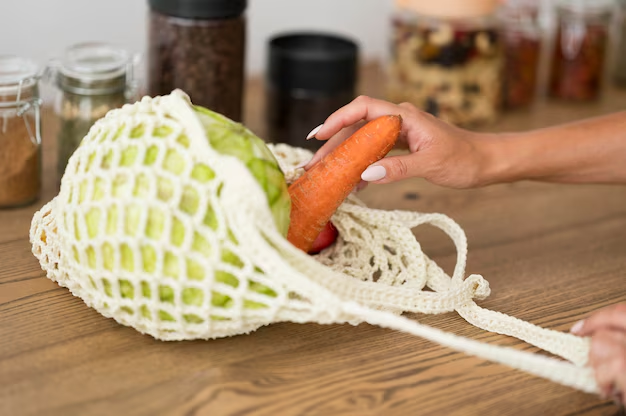How Long Does Asparagus Last in the Refrigerator? Discover the Secrets to Extend Its Shelf Life
Asparagus, with its delicate flavor and vibrant green stalks, is a springtime favorite that can elevate any dish with a touch of elegance. But have you ever wondered how long those enticing stalks stay fresh once you pop them in the refrigerator? If you’re striving to minimize food waste and maximize the lifespan of your fresh produce, you’ve come to the right place. Let’s delve into everything you need to know about storing asparagus to keep it crisp and delicious for as long as possible.
Understanding the Freshness of Asparagus
Buying fresh asparagus is your first step in ensuring it stays longer in your fridge. Asparagus stalks should be firm and straight, with tightly closed tips. Wilted or mushy spears mean the asparagus is past its prime. Once you've selected prime asparagus, proper storage techniques will extend its life.
Why Freshness Matters
Freshness isn't just about preserving taste—it's about maintaining nutritional value too. As asparagus ages, its nutrients begin to degrade. When kept fresh, it retains its fiber, vitamins A, C, and K, and essential minerals such as folate and iron, which are key components that contribute to a balanced diet.
Storing Asparagus: The Essentials
Keeping It Fresh in the Refrigerator
The optimal way to store asparagus involves treating it almost like a bouquet of flowers:
- Trim the Ends: Before storing, trim about an inch off the bottoms of the stalks.
- Upright in Water: Place the asparagus upright in a jar or glass with about an inch of water in the bottom. Cover the tops loosely with a plastic bag to maintain humidity.
- Refrigerate: Store it in the crisper drawer if possible, as consistent cool temperatures are key to prolonging freshness.
Stored in this way, asparagus can remain crisp and firm for up to one to two weeks. The method keeps asparagus hydrated and slows the wilting process caused by the dry air inside the refrigerator.
Alternative Storage Methods
If using water isn’t an option, you can also wrap the trimmed ends in a moist paper towel and place the spears in a plastic bag. This method can be slightly less effective but still offers around a week of freshness.
Signs That Asparagus Has Gone Bad
Knowing when asparagus has turned is essential to avoid potential waste and foodborne illness. Here’s what to watch for:
- Sliminess: A noticeable slimy texture on the stalks is a clear sign they should be discarded.
- Discoloration: Dark or yellowing tips mean the asparagus is breaking down.
- Odor: If asparagus develops an off-smell, it’s past its best.
Extending Shelf Life: Additional Tips
Blanching and Freezing for Longer Storage
If you're unable to consume your asparagus within its fresh period, consider blanching and freezing it:
- Blanch: Immerse the spears in boiling water for about 2-4 minutes, depending on thickness, then quickly cool them in ice water.
- Dry: Pat them dry to prevent ice crystals from forming during freezing.
- Freeze: Arrange the spears on a tray to avoid sticking and freeze. Once frozen, transfer them to a zip-lock bag, squeezing out excess air.
This method preserves asparagus for up to 8 months, maintaining its flavor and nutritional value.
Pickling for Longer Preservation
Another way to enjoy asparagus year-round is through pickling. The acidity from the vinegar keeps harmful bacteria at bay while allowing you to enjoy a unique flavor.
Related Topics: Beyond Asparagus
Your interest in asparagus storage hints at a keen desire to reduce waste and make the most of all your grocery purchases. Here are a few more related insights:
The Art of Storing Fresh Produce
Different types of vegetables have varying storage needs:
- Leafy Greens: Store in a dry, breathable bag to avoid excess moisture, which can lead to spoilage.
- Root Vegetables: Keep in a dark, cool place; many don't require refrigeration.
Understanding Veggie Shelf Lives
Create a cheat sheet for common produce lifespan in the fridge to avoid spoilage:
- Tomatoes: Best kept at room temperature but will last up to a week in the fridge when ripe.
- Bell Peppers: Fresh for up to two weeks if stored in the fridge.
- Cucumbers: Refrigerated cucumbers can last about 1 week.
Sustainability and Reducing Food Waste
Practices like creating a meal plan, using leftovers creatively, and proper food storage are fundamental in minimizing waste. They not only help you save money but also make a positive environmental impact.
Summarizing the Essentials
Before we wrap up, here’s a quick-reference guide to help prolong your asparagus’s shelf life:
- 🌿 Trim & Stand: Always trim the asparagus bottoms and stand them in water for the longest fridge life.
- 🧊 Freeze: Learn to blanch and freeze to enjoy asparagus year-round.
- 👃 Fresh Checks: Regularly check for slime, discoloration, and smell to determine freshness.
- 🥒 Diversify Methods: Consider pickling for a tangy preservation alternative.
- 💡 Educate: Understand storage techniques for other vegetables to maximize freshness across your produce selections.
Incorporating these methods into your kitchen habits doesn't just help preserve the delicate, delicious asparagus—it also encourages a more organized and waste-conscious lifestyle. Next time you open your refrigerator door to vibrant, fresh asparagus, you'll take comfort in knowing that you're one step closer to becoming a more sustainable, savvy consumer.
